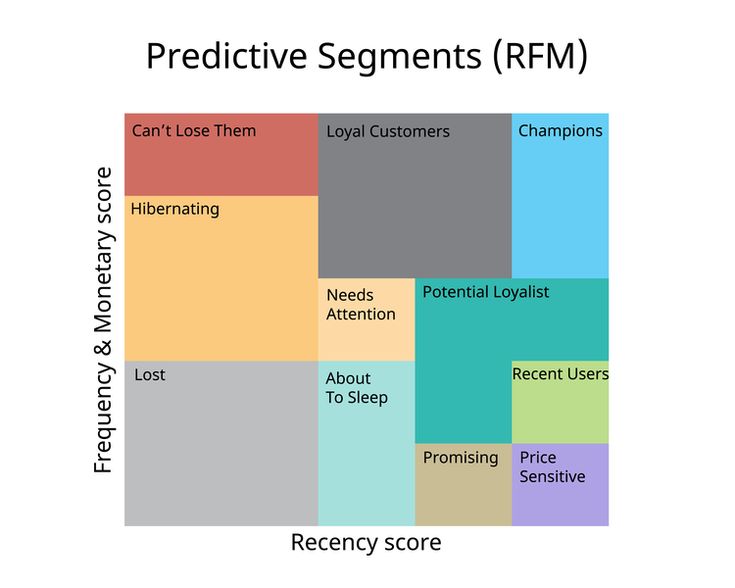What Questions Can RFM Analysis Answer for Your Business?
Kishore Babu Valluri
7/5/20254 min read


In today’s customer-centric world, understanding your customer base is crucial for crafting effective marketing strategies, boosting customer loyalty, and driving revenue growth. One of the most powerful methods to achieve this is RFM (Recency, Frequency, Monetary) Analysis.
RFM analysis helps businesses categorize customers based on their past interactions and behaviors. This segmentation allows companies to target the right customers with the right messages at the right time.
But what exactly can RFM analysis help answer? Let’s dive into some of the key questions that RFM analysis can solve for your business.
1. Which Customers are Most Likely to Buy Again?
One of the core strengths of RFM analysis is identifying high-value customers who are most likely to make repeat purchases. By examining the Recency (how recent the last purchase was) and Frequency (how often they make purchases), RFM helps you pinpoint customers who are actively engaged and more likely to buy again.
Answer: These are your “champions” and “loyal customers” who should be prioritized for loyalty programs or special offers.
2. Which Customers Should Be Targeted with Retargeting Campaigns?
Not all customers are as engaged as they once were. Recency is a key factor here—if a customer hasn’t interacted with your brand in a while, they might be slipping away. RFM analysis allows you to identify at-risk customers who haven't made a purchase recently and might need a nudge to re-engage.
Answer: These are your “at-risk” customers who can be targeted with re-engagement offers, special promotions, or reminders.
3. Which Customers Are Worth Investing More In?
Customers who not only purchase frequently but also spend more money are your highest-value clients. Monetary analysis helps you identify customers who bring in the most revenue, enabling you to focus your resources on retaining and nurturing them.
Answer: These are your “high-value” customers. They should be the focus of personalized marketing efforts and premium rewards.
4. Who Are Your Most Loyal and Engaged Customers?
The combination of Frequency and Monetary is a great indicator of loyalty. Customers who buy often and spend a lot are the backbone of your business. These are the individuals who can provide valuable word-of-mouth marketing and serve as brand advocates.
Answer: These are your “loyal customers” who you can turn into brand ambassadors or use as case studies in marketing campaigns.
5. Which Customers Are Likely to Churn?
Churn prediction is vital for retention strategies. If customers haven’t made a purchase recently and their frequency is decreasing, it’s a sign they might be about to leave. RFM helps you identify these customers and take preventive actions, such as sending out targeted offers or incentives.
Answer: These are your “at-risk” and “needy” customers who are on the verge of churning. Retention campaigns can be designed specifically for them.
6. How Can I Increase Customer Lifetime Value (CLV)?
RFM analysis gives you insights into how you can increase the lifetime value of each customer. By identifying the purchasing behaviors of high-value customers (high Recency, high Frequency, high Monetary), you can tailor your offerings to encourage repeat purchases, upsell, and cross-sell.
Answer: This is where targeted loyalty programs, exclusive offers, and personalization can help to boost customer retention and increase CLV.
7. How Can I Optimize My Marketing Spend?
Not all customers are equally profitable, so it’s important to focus marketing efforts where they’ll have the most impact. RFM analysis can help you allocate resources efficiently by identifying which customer segments provide the most revenue. This allows you to optimize your marketing budget and reduce wasted spend.
Answer: By understanding which segments are most valuable, you can better allocate marketing resources to maximize ROI.
8. How Can I Create More Personalized Campaigns?
By segmenting customers based on their Recency, Frequency, and Monetary values, RFM analysis allows for hyper-targeted marketing strategies. For example, you can send personalized offers, product recommendations, or loyalty rewards based on a customer’s behavior.
Answer: These are your “personalized campaigns,” where each message is tailored to a customer’s specific purchasing behavior, increasing engagement and conversion.
9. How Do I Identify New Opportunities for Upselling and Cross-Selling?
RFM analysis is also a powerful tool for identifying opportunities for upselling and cross-selling. By understanding what products or services high-frequency, high-value customers are buying, you can predict what they might be interested in next.
Answer: These insights allow you to craft tailored upsell or cross-sell offers for customers who are most likely to purchase more based on their past spending habits.
10. Are There Any Seasonal Trends or Patterns?
RFM analysis can also help you identify seasonal buying patterns by examining Recency and Frequency trends over time. For instance, if certain customers only purchase around specific holidays or events, you can plan marketing campaigns ahead of time.
Answer: These insights can guide your marketing strategy for peak seasons or major events.
Conclusion: RFM Analysis as a Powerful Tool for Business Growth
RFM analysis is an essential tool for understanding your customers and making data-driven decisions. By answering critical business questions like:
Who are my most valuable customers?
Which customers need to be re-engaged?
How can I improve retention and maximize revenue?
RFM empowers businesses to segment their customers intelligently and deploy more effective, targeted marketing strategies. Whether you're looking to optimize your campaigns, predict churn, or personalize customer experiences, RFM analysis offers the insights you need to stay ahead of the curve.
If you're not using RFM analysis yet, now might be the time to start unlocking the full potential of your customer data!
for more details visit the following blog post:
Unlocking Powerful Customer Insights: RFM Analysis Enhanced by Generative AI | deepai automations
Want to Dive Deeper?
If you want to know more about how to implement RFM in your business or need help with segmentation, don’t hesitate to reach out! Let's make data work for you. 📈✨
This blog post is designed to show the power of RFM analysis and how it can answer specific business questions that drive growth and customer loyalty. Let me know if you’d like any further adjustments!
Let's Get in Touch
marketing@deepaiautomation.com
+91 6309397994
© 2025. All rights reserved.
Industries
Manufacturing
Financial Services
Retail
Solutions
DocuMind AI - Intelligent Document Migration
InsightEdge AI - Intelligent Power BI Reporting & Analytics
DCT AI - Digital Control Tower for Intelligent Enterprise Visibility
Inventra AI - Intelligent Inventory Optimization Platform
Maintenix AI - Predictive Maintenance Intelligence Platform
PayPredict AI - Intelligent Customer Payment Prediction Platform
SegMind AI - Intelligent Customer Segmentation & RFM Analytics Platform
DataForge AI - Intelligent ETL & Analytics Modernization Platform
DataSense AI - Intelligent Data Quality & Outlier Detection Agent
